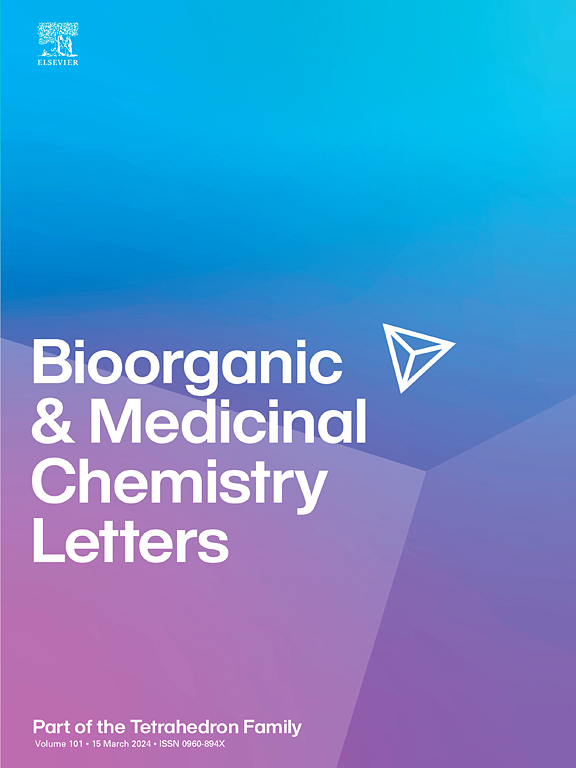Cytosine mimic azophenoxazine tCOAzo quenches FAM fluorescence and provides concentration-dependent Raman quenching upon molecular beacon hybridization
IF 2.5
4区 医学
Q3 CHEMISTRY, MEDICINAL
引用次数: 0
Abstract
The molecular beacon (MB) strategy finds diverse applications in bioimaging, biosensing and disorders diagnostics. Classic MBs are stem-loop oligonucleotides modified with a reporter and a quencher at the 5′- and 3′- ends. Hybridization with a specific target leads to spatial separation of the quencher and the reporter with subsequent changes in spectral signal, for example, an increase in reporter fluorescence emission. However, hydrophobic interactions between a conventional bulky quencher and the reporter might influence hybridization properties and limit stem length in MB design. In this work, we studied the synthetic nucleobase analog tCoAzo mimicking cytosine, capable of quenching reporter (FAM) fluorescence in folded MBs while minimally affecting their tharmal stability compared to MBs with classic FAM/BHQ1 labels. In addition, we conducted a preliminary assessment of the applicability of FAM/tCoAzo-modified MBs for SERS-based techniques using short single-stranded and long double-stranded DNA fragments from Fusarium avenaceum elongation factor 1a DNA as matrices. SERS intensity was decreased in the presence of matrix DNA compared to the scrambled sequence; and the MB modified with three tCoAzo residues provided a concentration-dependent signal. The results indicate that tCoAzo is a promising tool for fine tuning MB properties for fluorescent- and SERS-based diagnostic applications.

胞嘧啶模拟azophenoxazine tCOAzo猝灭FAM荧光,并在分子信标杂交上提供浓度依赖性拉曼猝灭。
分子信标(MB)策略在生物成像、生物传感和疾病诊断中有多种应用。经典的MBs是环茎发夹寡核苷酸,在5‘和3’端修饰了一个报告基因和一个猝灭基因。与特定靶标杂交导致猝灭者和报告基因在空间上分离,随后光谱信号发生变化,例如报告基因荧光发射增加。然而,一个方便的大体积猝灭剂和报告基因之间的疏水相互作用可能会影响杂交特性并限制MB设计中的茎长。在这项工作中,我们研究了模拟胞嘧啶的合成核碱基类似物tCoAzo,它能够在折叠的mb中猝灭报告(FAM)荧光,同时与经典FAM/BHQ1标记的mb相比,对其稳定性的影响最小。此外,我们使用镰刀菌延伸因子1a DNA的短单链和长双链DNA片段作为基质,对FAM/ tcoazo修饰的mb在基于sers技术中的适用性进行了初步评估。与打乱序列相比,基质DNA存在时SERS强度降低;三个tCoAzo残基修饰的MB提供了浓度依赖性信号。结果表明,tCoAzo是一种很有前途的工具,用于微调MB的性质,用于荧光和基于sers的诊断应用。
本文章由计算机程序翻译,如有差异,请以英文原文为准。
求助全文
约1分钟内获得全文
求助全文
来源期刊
CiteScore
5.70
自引率
3.70%
发文量
463
审稿时长
27 days
期刊介绍:
Bioorganic & Medicinal Chemistry Letters presents preliminary experimental or theoretical research results of outstanding significance and timeliness on all aspects of science at the interface of chemistry and biology and on major advances in drug design and development. The journal publishes articles in the form of communications reporting experimental or theoretical results of special interest, and strives to provide maximum dissemination to a large, international audience.

 求助内容:
求助内容: 应助结果提醒方式:
应助结果提醒方式:


